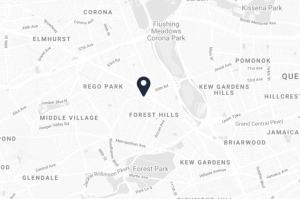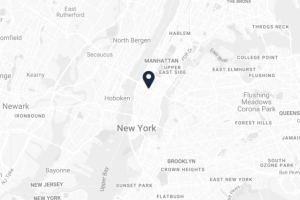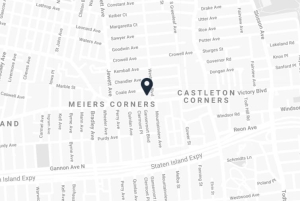Car Accident From Running a Stop Sign: How to Prove this Type of Queens Car Accident?
CAR ACCIDENT FROM RUNNING A STOP SIGN: HOW TO PROVE THIS TYPE OF QUEENS CAR ACCIDENT?
| Aug 20, 2020 | Car Accidents |
OUR QUEENS CAR ACCIDENT LAWYER EXPLAINS HOW TO PROVE LIABILITY WHEN A CAR ACCIDENT FROM RUNNING A STOP SIGN HARMS YOU
One of the most basic signs while driving a motor vehicle is the stop sign. It is large, oddly shaped, and of a bright red color. We know as young children what this sign means, whether we see it in the street or on the corner of a test or application. This is a universal sign too, transcending many different countries. Indeed, a stop sign is one of the most obvious and well-understood signs in the entire country if not the world. This is why a car accident from running a stop sign is simply an unacceptable type of accident.
But unfortunately it is a common type of motor vehicle accident. Our Queens car accident lawyers at Cohen and Cohen Law Group, P.C., know just how dangerous and devastating it can be when a motor vehicle accident is caused by a vehicle running a stop sign. Our personal injury lawyers have dedicated their practice to protecting the rights of victims who are injured in any type of accident, especially an auto accident. We can fight to recover compensation for victims such as for pain and suffering, lost wages, lost future earnings, and medical bills. If you or a loved one were injured in a motor vehicle accident, ask our experienced auto accident lawyers in Queens, NY how we can prove your case.
PROVING A STOP SIGN ACCIDENT IN NEW YORK
A victim who is injured in a car accident from running a stop sign has to prove certain things. Generally that is liability, damages, and causation. Liability is who is at fault for the accident. This is usually done through the law. Damages is the next thing to prove, which is establishing the harm that was caused by the at fault party. Finally, causation is the most contested part of every lawsuit which is connecting the liability to the damages. This means that a victim needs to establish that the car accident caused his or her damages, and such damages where not caused by other means or were pre-existing.
In order to prove these three elements, a victim in a Queens car accident must convince the court (the judge or the jury) that his or her claim is correct. This is done by through the burden of proof or the burden or persuasion.
Under New York law, in order to establish the elements in a personal injury case the victim must establish the elements by a “preponderance of the evidence.” Unlike the beyond a reasonable doubt standard in criminal cases, which is a standard of 98-100%, the preponderance of the evidence standard is just that the part is telling the truth more likely than not. This means that a victim only needs to prove his or her burden by 51% or more.
PROVING LIABILITY IN A CAR ACCIDENT FROM RUNNING A STOP SIGN
When a victim is injured due to a defendant running a stop sign, liability is usually covered by New York law through the statutory law. This is legislatively-made law that is put into statutes, or books of legal code. The books of law regarding motor vehicle accidents are in the Vehicle and Traffic law. There are several provisions which relate to stop signs.
Most pertinently, vehicles entering a stop intersection is governed by New York Vehicle and Traffic Law section 1142, which requires that “every driver of a vehicle approaching a stop sign shall stop as required by [VTL section 1172] and after having stopped shall yield to the right of way to any vehicle which has entered the intersection from another highway or which is approaching so closely on said highway as to constitute an immediate hazard during the time when such driver is moving across or within the intersection.”
Section 1172 referenced above governs stop and yield signs, which provides that “every driver of a vehicle approaching a stop sign shall stop at a clearly marked stop line, but if none, then shall stop before entering the crosswalk on the near side of the intersection, or in the event there is no crosswalk, at the point nearest the intersecting roadway where the driver has a view of the approaching traffic on the intersecting roadway before entering the intersection and the right to proceed shall be subject to the provisions of [VTL section 1142].” This is the section which requires a yielding to the right of way of all other approaching vehicles.
USING THE VIOLATION OF A STATUTE TO PROVE LIABILITY
When a defendant who causes a car accident from running a stop sign and causes injuries in Queens, Manhattan, Staten Island, Brooklyn, Bronx, Long Island, or anywhere else in New York City or near NYC, he or she may automatically be found liability under the doctrine of negligence per se.
This doctrine allows a victim to automatically establish liability where there is a violation of a statute that is meant to protect the victim from the type of harm that occurred. When a defendant violates either second of law and causes a Queens car accident, a victim injured in the motor vehicle accident from being t-bone, sideswiped, or otherwise collided with is likely to be able to automatically establish liability.
ASK OUR QUEENS CAR ACCIDENT LAWYERS HOW TO PROVE LIABILITY IN A STOP SIGN ACCIDENT
If you or a loved one were seriously injured, or if a loved one was wrongfully killed, by a defendant who ran a stop sign, call Cohen and Cohen Law Group, P.C. for a FREE consultation to learn how we can help protect your rights to compensation under New York law. Our Queens car accident lawyers will work with your treating physicians and may hire liability experts to help prove your case against a negligent party who caused your traumatic brain injuries, spinal cord injuries, broken bones, amputations, nerve injuries, scarring, or any other damages due to unnecessary and preventable conduct.
Remember, following what a stop sign means is something even a little kid can do. When a licensed driver fails to do so and causes injuries, New York law gives victims many ways to fight back. Learn how we can help you by calling (718) 275-7779 for a FREE case evaluation or use our convenient and easy-to-use contact us box available here.



